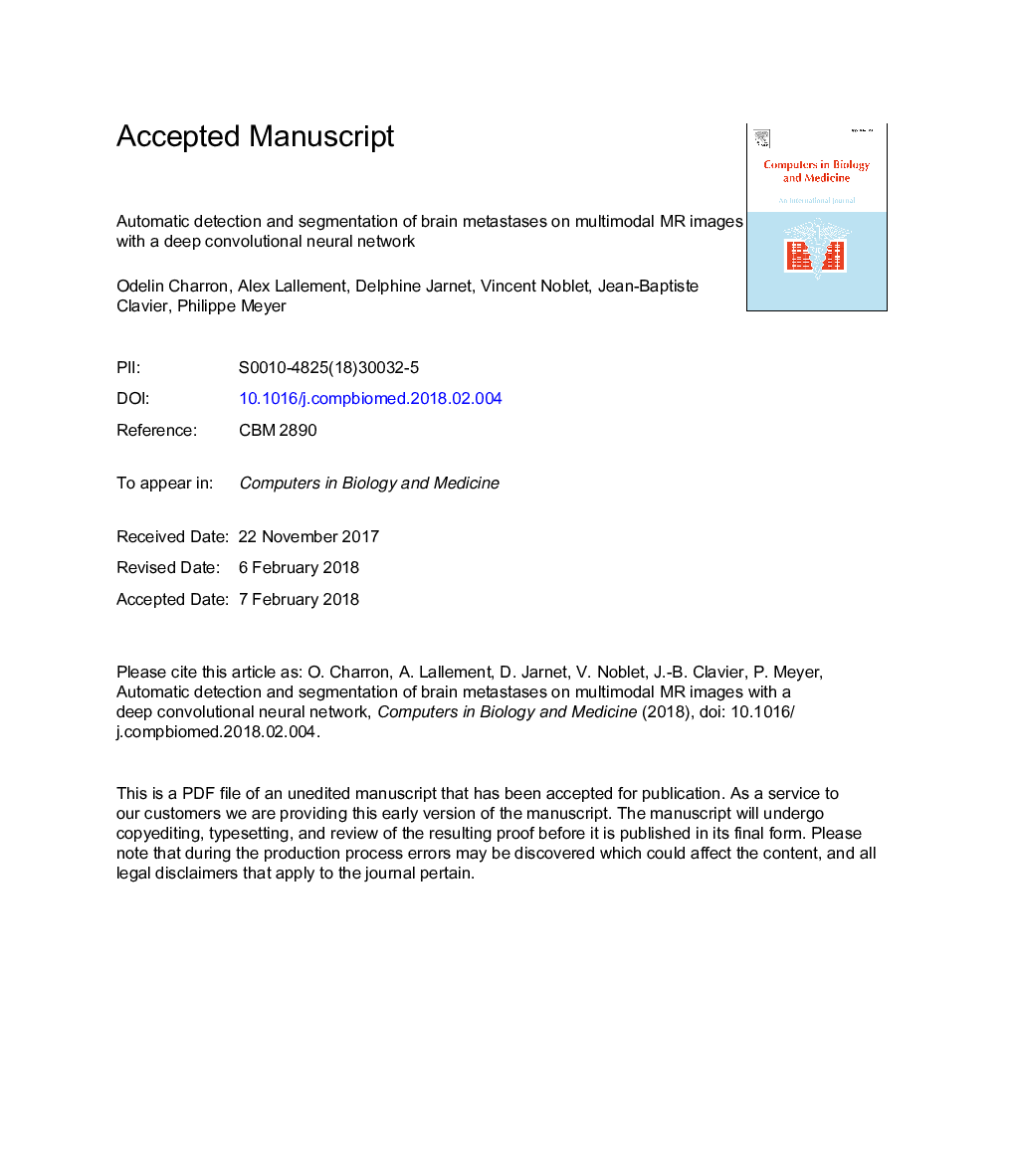| Article ID | Journal | Published Year | Pages | File Type |
|---|---|---|---|---|
| 6920606 | Computers in Biology and Medicine | 2018 | 26 Pages |
Abstract
Stereotactic treatments are today the reference techniques for the irradiation of brain metastases in radiotherapy. The dose per fraction is very high, and delivered in small volumes (diameter <1â¯cm). As part of these treatments, effective detection and precise segmentation of lesions are imperative. Many methods based on deep-learning approaches have been developed for the automatic segmentation of gliomas, but very little for that of brain metastases. We adapted an existing 3D convolutional neural network (DeepMedic) to detect and segment brain metastases on MRI. At first, we sought to adapt the network parameters to brain metastases. We then explored the single or combined use of different MRI modalities, by evaluating network performance in terms of detection and segmentation. We also studied the interest of increasing the database with virtual patients or of using an additional database in which the active parts of the metastases are separated from the necrotic parts. Our results indicated that a deep network approach is promising for the detection and the segmentation of brain metastases on multimodal MRI.
Keywords
Related Topics
Physical Sciences and Engineering
Computer Science
Computer Science Applications
Authors
Odelin Charron, Alex Lallement, Delphine Jarnet, Vincent Noblet, Jean-Baptiste Clavier, Philippe Meyer,
